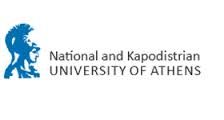|
MechanismMembrane lipids inhibitors |
Active Org.- |
|
Active Indication- |
|
Drug Highest PhasePending |
First Approval Ctry. / Loc.- |
First Approval Date20 Jan 1800 |
/ RecruitingNot ApplicableIIT Strategies to AchieVe Viral Suppression for Youth With HIV (The SAVVY Study)
Although there have been advances in antiretroviral treatment (ART) for HIV, adolescents and young adults living with HIV (AHIV) continue to have disparate HIV outcomes particularly viral suppression (VS), when compared to other populations likely related to multi-layered challenges (social determinants, cognitive development), system, and biomedical challenges including the reliance on oral ART as the only choice for HIV treatment. Given that approximately 1/3 of AHIV despite being in care fail to attain or sustain VS with resultant individual and public health risk, there is a need to develop real-world implementable interventions that can improve the participants virologic outcomes. The Strategies to AchieVe Viral Suppression for Youth with HIV (SAVVY) Study aims to 1) optimize personal ART choice by using the HIV-ASSIST clinical program to inform CHOICE counseling regarding an AHIV's preferred approach, including the possibility of long-acting injectable ART (LAI-ART); 2) facilitate access to the participants preferred choice through deploying a focused team to navigate barriers to attaining LAI-ART; and 3) decipher and address the patient, provider, and systemic barriers to the uptake and routinization of LAI-ART among AHIV by applying an implementation science framework and assessing cost-effectiveness providing critical data to support comprehensive approaches to optimizing ART and VS for AHIV, a key population identified in the Ending the HIV Epidemic in the United States Initiative.
/ CompletedNot ApplicableIIT A Randomized Controlled Clinical Trial on the Effectiveness of Three Different Mouthrinses, Adjunct to Periodontal Surgery, in Dental Plaque Control and Early Wound Healing
Aim: This study compared the effectiveness of three different mouthrinses (alcohol and non-alcohol chlorhexidine, alkyl dimethyl glycine / alkyl dimethyl amine oxide - C31G) in plaque control and early wound healing, postoperatively.
Materials and Methods: In this, randomized, double-blind, controlled clinical trial 42 patients were allocated to three groups assigned to two weeks rinsing after periodontal surgery with C31G (group A), alcohol-free chlorhexidine 0.12% (group B) or alcohol-based chlorhexidine 0.12% (group C). At weeks 1 and 2, plaque and early wound healing indices were recorded. At day 14, total bacterial counts were estimated utilizing real - time qPCR. Statistics included linear and generalized linear mixed models.
A Phase II/III Multicenter, Randomized, Double-masked, Study of the Safety and Contraceptive Efficacy of C31G Compared to Conceptrol®
This is a multicenter, randomized, double-masked, controlled, phase III study of repeated use of C31G vaginal gel compared to Conceptrol® Vaginal Gel as the primary method of contraception over six months (183 days) and at least six cycles of use. In addition, there is an opportunity for subjects to continue with study treatment for up to twelve months (365 days) and twelve cycles of treatment upon completion of the first six months of treatment.
100 Clinical Results associated with Membrane lipids
100 Translational Medicine associated with Membrane lipids
0 Patents (Medical) associated with Membrane lipids



